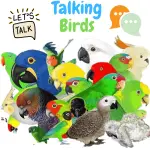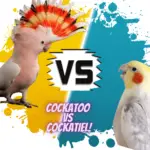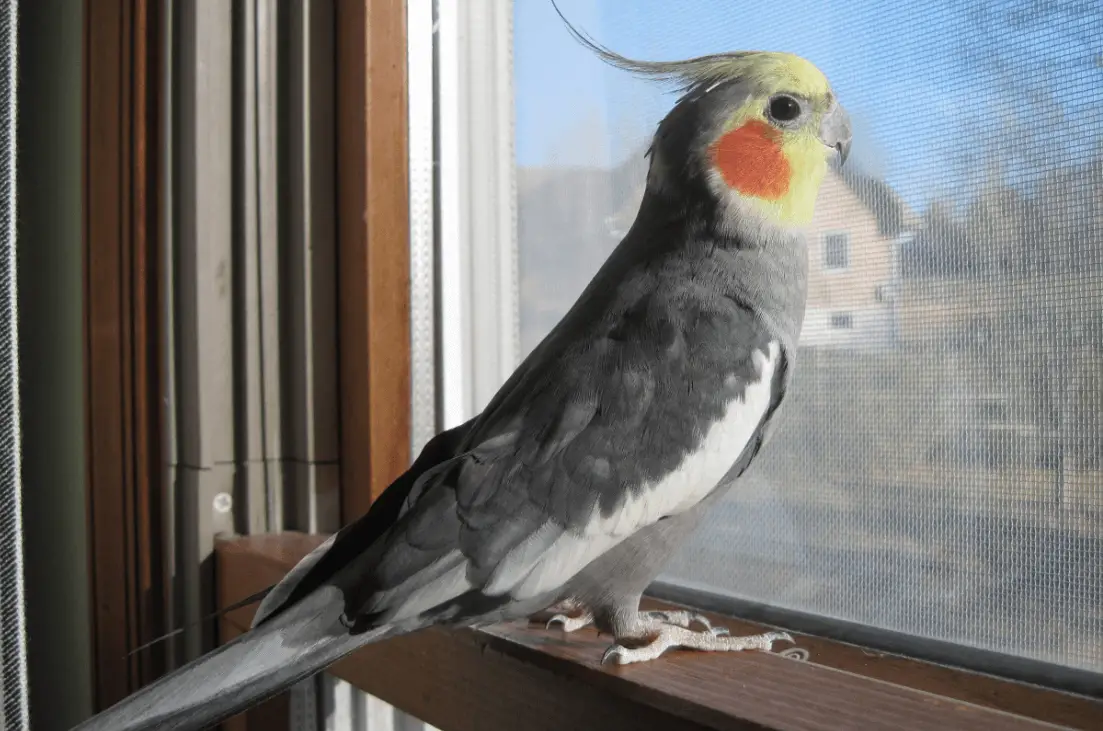
An In-Depth Look at the Varying Colours and Breeds of Cockatiels
Cockatiel colors Mutations,
The Cockatiel, also scientifically referred as Nymphicus hollandicus, is a popular bird species known for its varying colour mutations.
Family: Cacatuidae
Genre: Nymphicus
Classification: It is the only species of the genus Nymphicus.
Size: From 30 to 35 cm long in the wild, up to 37 to 40 with a large hut in captive subjects from the selection.
The color of the bird is brown/ brown also called “cinnamon”, whether male or female. The head is yellow in the male and duller in the female, just yellow around the beak. The female has the rectrices striated (tail feathers), and the wing band is always present.
Cockatiel bird
- Albino Cockatiels are unique due to their lack of feather pigmentation, resulting in a white feather coat.
- Lutino: White bird with a yellow mask, orange cheeks, and red eyes.
- Pied: Typical wild cockatiel colors replaced with a yellow or off-white color.
- Pearl laced or opaline: Spotting of various colors that creates tiny “pearls” along with its feathers.
Cockatiels colors with the name
SOURCE:Swamy Birds
Longevity: 25 to 30 years
Distribution: The elegant Cockatiel or simply Cockatiel or Nymphic Parakeet is a species of Australian bird. The Cockatiel populates almost all of Australia but not coastal areas.
It was introduced to Tasmania. This bird frequents savannahs and pastures but also urban areas. Description: Its plumage is anthracite grey, very dark, and can almost go as far as black.
The hut and part of the head are yellow. Two yellow-orange spots mark the cheeks. The wing mirror is white (stain on the edge of the wing). The female does not have the yellow mask and has streaks under the tail, and yellow dots under the wings. The young look like the female.
If you're considering adopting a Cockatiel, you'll be pleased to know they're as sociable with humans as they are with their own kind. They form deep bonds and consider themselves full members of their human family.
However, if the bird is likely to be left alone in your home, it is better for the bird to have a companion. The Cockatiels need a presence and are very supportive of each other.
However, the rivalry between males is present, so it is common for them to argue with beaks (but rarely to the point of injury), spread their wings, and expose their singing to their comrades to prove their superiority. These birds are essentially expressed with the poppy on their heads.
It is an animal considered domestic. Familiar birds par excellence, Cockatiels are easily tamed. It is possible to teach them to whistle a tune and say a few words but they are not reputed to be great speakers. Males are more likely to sing and imitate noises than females.
Cockatiel colors explained – mutations and genetics
SOURCE:TielZone
There are many ways to sex Cockatiels, some mutations are more difficult to sex than others. The first way, which is by no means scientific, is to stop singing, usually, a male sings and he is more likely to speak than a female.
But sometimes females sing, so don’t trust them 100%. Males have a beautiful yellow mask (the plumage of the cheeks) while in the female the plumage is mixed with grey.
If you have a Cockatiel lutino, with yellow plumage, this criterion is not to be considered. There are also tail feathers that can teach you more. Look at the inside of the tail, that is, lift it higher than your head to look at its tail.
If you see yellow streaks on her feathers, she is definitely a female. There is another way to find out, but it requires greater maneuverability of the bird. You have to open its wings, and look at the longest feathers, if you see any dots, or yellow spots, it’s a female.
Of course, all this stuff is hard to apply on lutino mutation Cockatiels but it is possible to see stains or streaks sometimes. In the beaded mutation Cockatiel (white spots on plumage) the beads disappear in males over one year old. So if you have a beaded Cockatiel of more than a year, it is very easy to have sex.
All these ways are intended to help you sexer your bird, know that it is difficult to sex a young bird, the safest way is to use sexing using the DNA of the bird. MUTATIONS: By combining mutations, birds with the characteristics of each mutation are obtained.
Top 14 Cockatiel colors and mutations | Top 14 Types of Cockatiels | Cockatiel parrot Top Varieties
SOURCE: finch forum
Cockatiel breeds
For example, a bird that is both white-sided and into-sided becomes albino (pure white).
Bronze fallow Description: Bronze fallow dilutes melanin by making it light brown, the eyes being bright red.
In the male, the body is light brown and the hut is light brown-yellow.
The mask is bright yellow and the cheeks are bright orange. The underside of the rectrices is uniformly light brown and the primary diets are united.
The beak and legs are light, the nails are dark and the eyes are red. In the female, the body is light brown, and in the huppe light brown-yellow. The mask is light brown slightly tinged with yellow and the cheeks are orange.
The underside of the rectrices is streaked and the primary diets are speckled. The beak and legs are clear. The nails are dark and the eyes are red.
Isabelle or Cinnamon Description: This mutation is also called the cinnamon and Isabelle mutation.
Cinnamon prevents the oxidation of melanin, which remains brown instead of turning grey-black. In the male, the body is brown and its huppe is yellow-brown.
The mask is bright yellow and its cheeks are bright orange. The underside of the rectrices is uniformly brown and the primary diets are united. The beak and legs are clear.
The nails are dark and the eyes in babies are red but they become purple, almost black as they age. In the female, the body is brown and the hut is yellow-brown. The mask is slightly yellow-tinted brown and the cheeks are orange.
The underside of the rectrices is streaked and the primary remiges are speckled with spots. The beak and legs are clear. The nails are dark and the eyes in babies are red but they become purple, almost black as they get older.
Cockatiel cinnamon or Isabelle/cinnamon cockatiel
(female on the left, male on the right)

rare cockatiel colors
Edged or silver dominant or blackhead Description: The edged changes the distribution of melanin on each feather of the wing cover, back, and body by sparing the head. Melanin is pent-up at the edge of the feather. In the male, the body is grey more or less silvery depending on whether it is a simple or double factor.
The hut is grey-yellow and the mask is bright yellow. The cheeks are shiny orange. The underside of the presidents is uniform and the primary regimes are united. The beak and legs are dark.
The nails are dark and the eyes are black. In the female, the body is grey more or less silvery depending on whether it is a simple or double factor. The hut is grey-yellow and the mask is silvery grey slightly tinged with yellow.
The cheeks are orange. The underside of the rectrices is streaked and the primary diets are mottled. The beak and legs are dark. The nails are dark and the
eyes are black Particularity: This mutation can be a simple factor or a double factor. The double factor is clearer and more metallic. It is difficult to detect this mutation in juveniles since this mutation takes its true color around the age of 1 year or 2.
White Face Description: The white face is a mutation known as the blue series that removes all psittacines (yellow and red pigments).
The bird is grey and white. In the male, the body is grey supported (darker possible) and the hut is grey-white. The mask is pure white and the cheeks are white, slightly greyish.
The underside of the rectrices is uniformly dark grey and the primary remiges are united. The beak and legs are dark. The nails are black and so are the eyes. In females, the body is grey but less dark than that of males.
The hoop is grey-white, the mask is slightly tinged with white and the cheeks are grey. The underside of the rectrices is streaked and the primary remiges are speckled with spots. The beak and legs are dark. The nails are black and so are the eyes.
Cockatiel white face-white-faced cockatiel
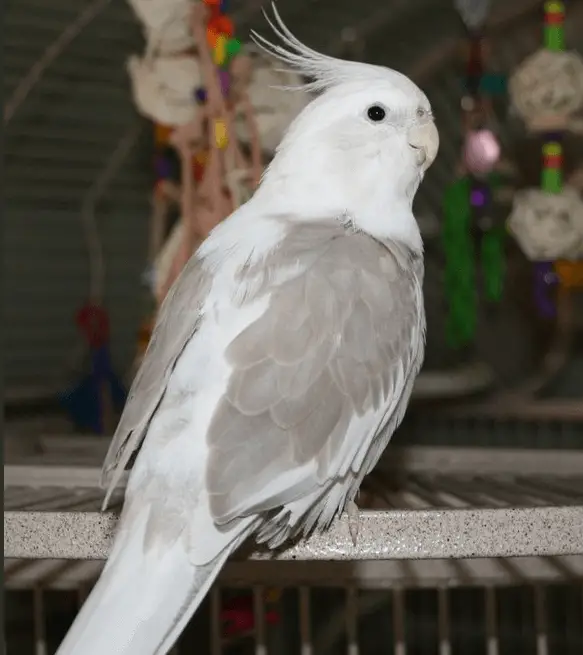 cockatiel breeds
cockatiel breeds
Face pale Description: The pale-faced mutation has, the peculiarity of giving the mask and cheek a lighter hue than the wild cockatiel.
It dilutes all the psittacine, so the cheek becomes more yellow-orange and the yellow of the mask paler.
Ash Fallow Description: The ash fallow dilutes melanin by making it light grey in the male and darker grey in the female, the eyes being red.
In the male, the body is light grey and the hut is grey-yellow. The mask is bright yellow and the cheeks are bright orange. The underside of the rectrices is uniform grey and the primary remiges are united.
The beak and legs are dark. The nails are dark and the eyes are red. In the female, the body is light grey and the hut is grey-yellow. The mask is light grey slightly tinged with yellow and the cheeks are orange.
The underside of the rectrices is streaked and the primary remiges are speckled with spots. The beak and legs are dark. The nails are dark and the eyes are red.
Yellow Cheeks Description: The yellow cheek turns red psittacine into yellow psittacine.
In the male, the body is grey supported (darker possible) and the hut is yellow-grey. The mask is bright yellow and the cheeks are darker yellow than the mask.
The underside of the rectrices is uniformly dark grey and the primary remiges are united. The beak and legs are dark. The nails are black and so are the eyes. In females, the body is sustained grey but less dark than that of males.
The hoop is grey-yellow, the mask is slightly yellow-tinted grey and the cheeks are yellow. The underside of the rectrices is streaked and the primary remiges are mottled. The beak and legs are dark. The nails are black and so are the eyes.
Lutino Description: Lutino is a mutation that suppresses melanins (grey and black pigments), so the bird is white, yellow, and red.
In males, the body can vary from pure white to sustained yellow. The hoop and mask are bright yellow and the cheeks are bright orange. The undersides of the rectrices and the primary remiges are united.
The beak and paws are pink. The nails are white and the eyes are red. In females, the body can vary from pure white to sustained yellow. The hoop is bright yellow, the mask is yellow and the cheeks are bright orange.
The underside of the rectrices is streaked with yellow and the primary remiges are mottled. The beak and paws are pink. The nails are white and the eyes are red.
Cockatiel lutino – lutino cockatiel-yellow cockatiel
Description: The mutation called olive appears to be only a selection of edges with a selection of yellow suffusion lines.
Also called emerald, this mutation has olive green-brown reflections. This mutation is only a selection of edges with a selection of yellow-scattered lines.
Opaline or pearl Description: Opaline alters the distribution of melanin on the feather by giving a beaded pattern that only young females possess, adult males, have the wild phenotype.
In the male, the body is grey supported with beads that fade with successive molts. The hoop is grey-yellow, the mask is bright yellow and the cheeks are bright orange. The underside of the rectrices is uniformly dark grey and the primary remiges are united.
The beak and legs are dark. The nails are black and so are the eyes. In the female, the body is gray with pearls. The hoop is grey-yellow, the mask is bright yellow or yellow-grey and the cheeks are orange. The underside of the rectrices is streaked and the primary remiges are mottled. The beak and legs are dark.
The nails are black and so are the eyes. Formerly called bead, it owes its name to its pearl-shaped plumage. It is found in white pearl and yellow pearl, called Golden Pearl if the yellow is very strong.
As males age, they lose their pearls and end up looking like grey males. Opalines can be very different from each other. Some have a lot of pearls, while others don’t. In addition, there are two kinds of beads: round (dotted beads) and elongated beads (bent beads).
Pearl Cockatiel – Grey pearled cockatiel
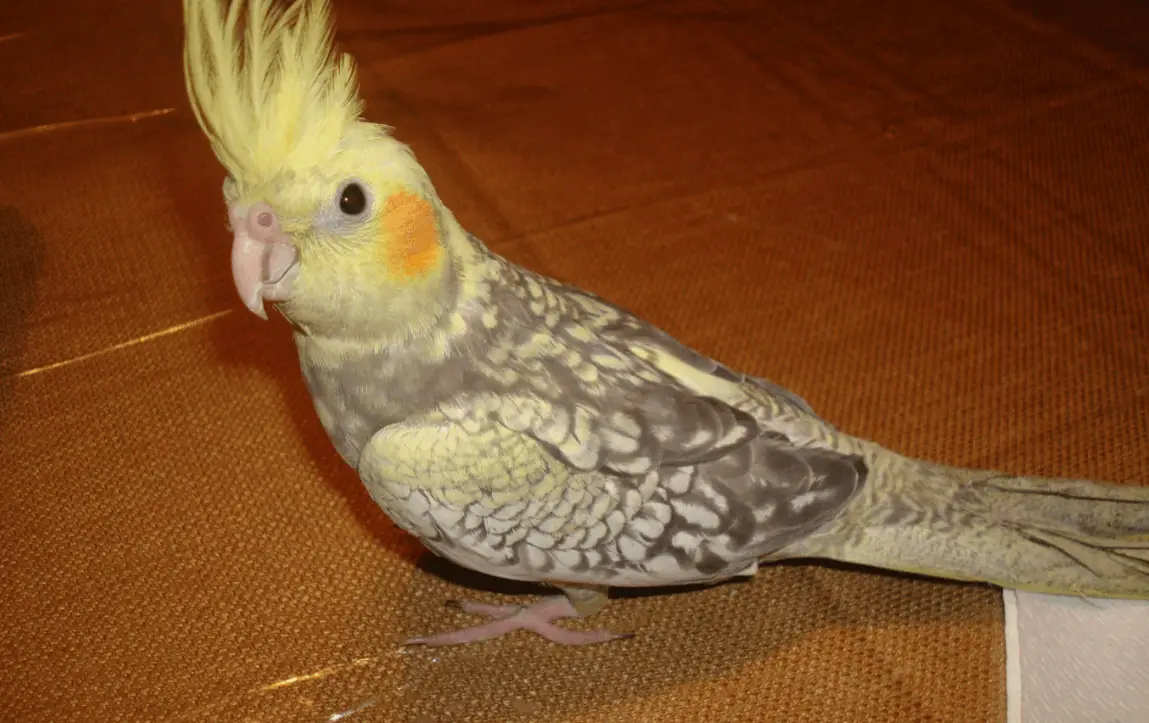
Description: On wild color, the body can be variegated with white, yellow, and grey.
It can also be all white or any yellow. The grey ratio should be 25% and the symmetry of the drawing at 75%.
The hut and mask can vary, but they can also be varied. The cheeks are orange. The underside of the rectrices is variable, with or without streaks.
The underside of primary remiges is also variable. The beak and legs can be variegated with grey and pink. The nails are black and white and the eyes are black.
Panache grey cockatiel-grey foot cockatiel
cockatiel colors chart
Wild color Description: The body is sustained grey, and the female is often less dark than the male.
The hut is grey-yellow. The male’s mask is bright yellow while the female’s mask is slightly yellow-tinted grey.
The cheeks are bright orange and duller in the female. The underside of the rectrices is uniform grey while it is streaked in the female.
The underside of the primary remiges is grey and spot-spotted in the female. The beak and legs are dark. The nails and eyes are black.
Standard grey cockatiel
How much do cockatiels cost
The cost of a Cockatiel can vary significantly, from £10 at a bird market to £100 for a hand-reared Cockatiel. Other costs you may need to consider include feeding, housing, vet checks, and more.

